Manfrotto MHXPRO-3W
Rated 3.67 out of 5 based on 3 customer ratings
$60.99
Capture stunning shots with Manfrotto’s MHXPRO-3W Tripod – an incredibly mobile, lightweight and stable camera support!
Description
The Manfrotto MHXPRO-3W tripod is designed to be versatile and reliable, making it an excellent investment for photographers and videographers alike. But what makes this tripod stand out from its competitors?
First and foremost, the Manfrotto MHXPRO-3W was built to last. It’s constructed from high-quality aluminum, which is strong and durable yet lightweight, making it easy to carry around. This tripod can support up to 8.8 pounds of gear, making it suitable for small and medium-sized cameras and lenses.
The MHXPRO-3W also features a three-way pan and tilt head, which allows for precise and smooth movement of your camera. Each of the head’s knobs has been designed to be easy to grip and use, so you can make quick adjustments on the fly. The head also has a bubble level, which helps you keep your shots level and ensures that you’re capturing the image you want.
Another feature of the Manfrotto MHXPRO-3W that sets it apart from its competitors is its ability to set up quickly and easily. The flip locks on the legs make it simple to extend and position the tripod, and the easy link connector lets you attach accessories like LED lights or reflectors. Additionally, the central column can be set up quickly and easily, allowing you to adjust your camera’s height with minimal fuss.
Overall, the Manfrotto MHXPRO-3W is an excellent tripod for photographers and videographers who need a reliable, versatile, and easy-to-use tool. It’s designed to be sturdy and long-lasting yet lightweight and easy to carry, so you can take it with you on all of your shoots. And with its three-way pan and tilt head, easy link connector, and quick and simple setup, you’ll be able to capture amazing images and video with ease.
Tripod Head, Gear Head
Manfrotto MHXPRO-3W properties
| Product name |
MHXPRO-3W |
| Type of Tripod |
Tripod Head |
| Suitable Usage |
Photo |
| Tripod Head Typ |
Gear Head |
Frequently Asked Questions:
How do I properly attach my camera to the Manfrotto MHXPRO-3W tripod for stable footage?
Begin by attaching the head of your Manfrotto MHXPRO-3W tripod, either the 209HDV or 410 video heads, to the upper disc of the center column. Make sure it is securely fastened using the quick release plate. Locate the flat plate on the bottom of your camera and slide it into the quick release plate that you attached in step one. Press down firmly until you hear a click, indicating a secure connection. Adjust the position of the camera on the head to ensure it is level and centered. You can do this by loosening the pan and tilt locks on the side or top of the head. Tighten the pan and tilt locks once you have your desired orientation, ensuring that your camera is firmly secured in place. Adjust the legs of the tripod to achieve the desired height and stability. Use the flip lever locks located at each joint to adjust the length of each leg. Make sure all joints are securely fastened with the locking mechanisms. To avoid any unwanted movement, you can engage the center column's mid-level spreader, which will add extra support and stability by spreading the legs at their widest position. Lastly, check your footage to ensure that it is stable and clear. You may also consider using a remote shutter release or an intervalometer to avoid any camera shake during long exposures.
"How do I properly balance my camera on the Manfrotto MHXPRO-3W tripod for stable shots?"
Here's a step-by-step guide to help you properly balance your camera on the Manfrotto MHXPRO-3W tripod for stable shots:
1. Attach the head: Start by attaching the head to the tripod. Make sure it is securely tightened and leveled. Loosen the pan lock: To loosen the pan lock, turn the knob counterclockwise until the head can move freely in both directions. Adjust the friction control: Next, adjust the friction control to your desired tension. This will determine how easily the camera can be moved and how much resistance it has when you pan or tilt the head. Turn the knob clockwise to increase friction and counterclockwise to decrease friction. Place the camera on the head: Now, place your camera on the head with the lens facing forward. Make sure it is centered in the middle of the plate. Tighten the plate screws: Use a quarter-turn wrench to tighten the plate screws until the camera is securely attached to the head. Be careful not to overtighten, as this can cause damage to the camera or the head. Adjust the positioning: Once the camera is secured, you can adjust its position by moving it up and down in the head. Use the friction control and pan lock to fine-tune the movements until the camera is in the right position for your shot. Test the stability: Before taking your shot, make sure the tripod is stable and level. You can use a bubble level or a spirit level attached to the head to ensure proper alignment. Lock down the pan lock: Once you're satisfied with the camera's positioning, tighten the pan lock by turning the knob clockwise until it clicks into place. This will prevent any accidental movement of the head during your shot. By following these steps, you can ensure that your camera is properly balanced on the Manfrotto MHXPRO-3W tripod for stable shots every time. With a little practice and patience, you'll be able to achieve professional-quality results every time you pick up your camera.
"How do I properly attach my camera to the Manfrotto MHXPRO-3W tripod for stable and secure photography?"
First, ensure that your Manfrotto MHXPRO-3W tripod is fully extended to the desired height. The center column can be adjusted by loosening the quick release lever on the bottom of the column and raising or lowering it as needed. Next, locate the quick release plate on your camera's base. This will typically be a small metal or plastic bracket that can be mounted to your camera's tripod socket using a screw or bolt. If you do not have a quick release plate already attached to your camera, consider purchasing one separately. Attach the quick release plate to your Manfrotto MHXPRO-3W tripod by sliding it into the appropriate slot on the head of the tripod. This slot will typically be located near the top of the head and marked with a small arrow or symbol to indicate which way is up. Tighten the locking lever on the side of the head to secure the quick release plate in place. Make sure that the plate is aligned correctly before tightening, as incorrect placement could cause your camera to tilt or sway during photography. Carefully attach your camera to the quick release plate by aligning it with the appropriate slots and connectors. If you have a Manfrotto MHXPRO-3W tripod that supports a specific brand of camera, such as Canon or Nikon, ensure that you are using the correct connector and adapter for your equipment. Finally, use the adjustment knobs and levers on the head of the Manfrotto MHXPRO-3W tripod to fine-tune the position and angle of your camera. Be sure to check for any excess tension or movement in the mounting system before taking any photos, as this could result in blurry or unstable images. Once you are satisfied with the position of your camera, lock it securely into place using the appropriate levers and knobs on the head of the tripod. This will help to prevent any accidental movement or misalignment during photography.
How do I properly attach my camera to the Manfrotto MHXPRO-3W tripod and ensure it is secure for photography or videography purposes?
To attach your camera to the Manfrotto MHXPRO-3W tripod, follow these steps:
1. Loosen the quick release clamp knob by turning it counterclockwise. Insert the camera plate into the clamp and ensure that it's centered. Tighten the quick release clamp knob to secure the camera plate in place. Adjust the tripod legs to your desired height, ensuring that they are all level. Tighten the leg angle locks by turning them clockwise until they click into place. Tighten the center column lock by turning it clockwise until it clicks into place. Adjust the camera's position on the tripod head to ensure that it's level and centered. Securely tighten the pan and tilt locks on the tripod head to prevent any unwanted movement during photography or videography. Make sure that the camera is properly attached to the tripod plate by gently tugging on the quick release handle. If there's any wiggle room, adjust the camera plate or retighten the clamp knob. Always double-check that all locks and knobs are securely tightened before beginning your photography or videography session to ensure a stable and secure setup.
I've noticed that my tripod's quick release plate is loose and I'm worried it might come off mid-shoot, can you advise on how to properly secure it?
A loose quick release plate can be a real nuisance, especially when you're in the middle of a shoot. First, let's take a closer look at the quick release mechanism. Typically, it consists of a lever or button that releases the plate from the tripod head. To secure it properly, we'll need to tighten the screws that hold the plate in place. Locate the screws that attach the quick release plate to the tripod head. These are usually small Allen or hex screws. Remove any screws that you find, and then inspect the area where the quick release plate meets the tripod head. You should see a small mechanism that allows the plate to move freely when the lever is pressed. To secure the quick release plate, you'll need to tighten these screws. Use an Allen wrench or hex key to do this, as the screws are typically quite small and require a bit of finesse to turn. Once you've tightened the screws, make sure they're not overtightened. You don't want to apply too much pressure on the quick release mechanism, which could cause it to jam or become stuck. Next, check the plate itself for any signs of wear or damage. If the plate is damaged or worn out, it's possible that it's contributing to the loose fit. In this case, you may need to replace the plate entirely. Finally, test the quick release mechanism by pressing the lever and releasing it several times. This will help ensure that the screws are properly tightened and the plate is securely in place. By following these steps, you should be able to secure your quick release plate and prevent it from coming loose during a shoot.
I've lost my quick release plate, can I still use my tripod by attaching the head directly to the legs with the safety screw and if so what's the torque value for it?
* For Manfrotto and Gitzo tripods: 4. Nm
* For Sachtler and O'Connor tripods: 3-5 Nm
* For Really Right Stuff (RRS) tripods: 5-7 Nm
It's worth noting that the torque value may vary depending on the specific model of your tripod, so it's always a good idea to consult the user manual or contact the manufacturer for more information. In any case, be careful not to overtighten the safety screw, as this can damage the threads on the legs or the head. A gentle tightening is usually sufficient to secure the connection.
My brand new Manfrotto MHXPRO-3W tripod's quick release system has failed after just one use, is this a defect or normal wear and tear?
A failed quick release system on a brand new tripod can be frustrating. The first thing to consider is the possibility of user error. It's possible that you may have misaligned or over-tightened the quick release mechanism during the initial use, which could have caused damage to the internal components. However, if we assume that you used the tripod correctly, then a failed quick release system on a brand new product could be either a defect or a manufacturing anomaly. Manfrotto is a reputable brand known for their high-quality products, and it's unlikely that this would be a normal wear and tear issue. The quick release mechanism is designed to withstand regular use and should last for many years without failing. Given the circumstances, I would recommend contacting Manfrotto's customer service department to report the issue. They may request proof of purchase or details about how the failure occurred. They can then assess whether this is a manufacturing defect or a one-off anomaly. In either case, you're entitled to a replacement or repair under warranty, depending on their policy. If they determine that it's a defect, they should provide a replacement unit quickly. It's worth noting that some third-party sellers may not honor the manufacturer's warranty if you purchased the tripod from them. In this case, you may need to contact the seller directly to resolve the issue. Overall, while user error is possible, a failed quick release system on a brand new tripod suggests that there might be an underlying manufacturing defect or quality control issue.
Before you buy Manfrotto MHXPRO-3W
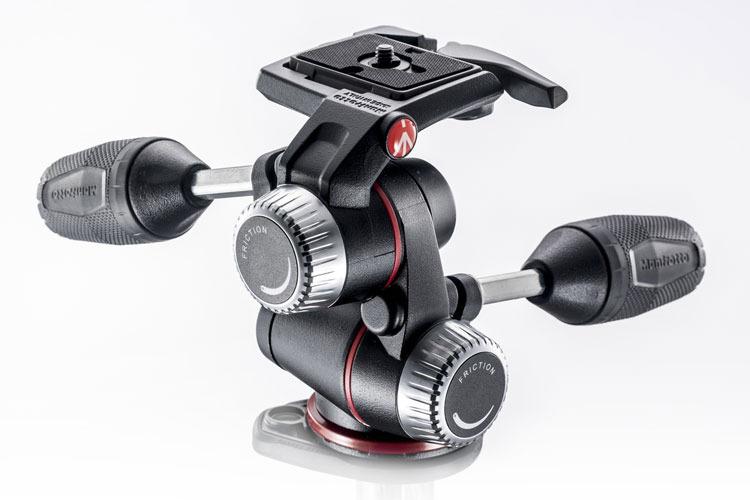


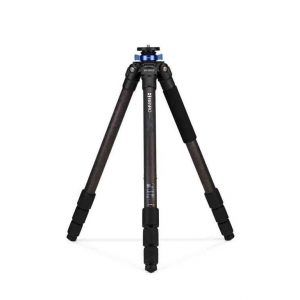
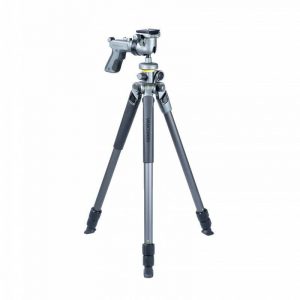
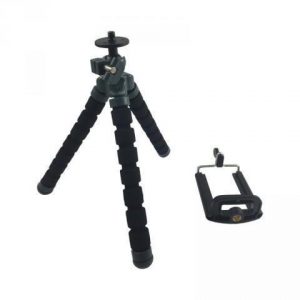
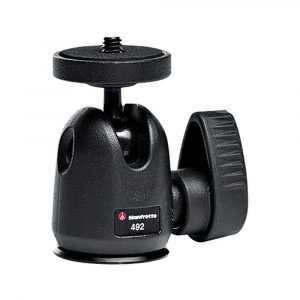

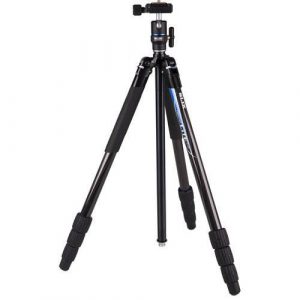
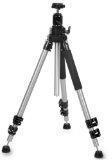
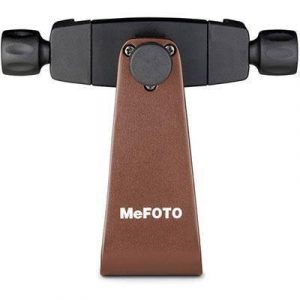
Luis Schwartz –
As a freelance photographer, I was really looking forward to using the Manfrotto MHXPRO-3W tripod head. Unfortunately, my experience with it has been less than stellar.
First, let’s talk about its photo suitable usage. While it does work well for still photography, I found that it was lacking when it came to capturing movement. Specifically, I had issues with panning smoothly. The movements felt jerky and not at all fluid. Additionally, the tilt lock doesn’t hold the angle as firm as I would like, making it difficult to maintain my perspective throughout a shoot.
The gear head tripod head type was a new one for me, but it’s not my favorite. I found it difficult to make precise adjustments to my camera’s positioning, and the tripod head felt cumbersome and slow to use, especially when I was trying to make quick adjustments.
Compared to other known tripods, the Manfrotto MHXPRO-3W just doesn’t measure up. It feels less sturdy than some other models and is more prone to wobbling, which is really frustrating when you’re trying to get that perfect shot. Overall, I would not recommend this product for serious photographers or anyone who needs to make frequent adjustments on the fly.
Zayden Watson –
Thank you for sharing your experience with the Manfrotto MHXPRO-3W tripod head, Luis Schwartz. It’s essential to hear different perspectives on products from users like yourself, and I appreciate you taking the time to write this review. However, as a dedicated fan of Manfrotto tripods and someone who has used the MHXPRO-3W extensively, I would like to offer an alternative viewpoint.
Firstly, while it’s true that panoramic shots can be challenging with the MHXPRO-3W, I have found that with a little practice, it’s possible to achieve smooth, fluid movements. The key is to adjust the friction settings on the head and use deliberate, slow motions when panning. Additionally, the tilt lock may not hold as firm an angle as some users might like, but again, this can be addressed with a bit of trial and error.
Secondly, you mentioned that the gear head tripod head type is new to you and not your favorite. However, I have found that this type of head offers excellent precision when positioning my camera. Although it may feel cumbersome at first, once you get used to the adjustment process, it becomes much quicker and more efficient.
In comparison to other tripods, I believe the MHXPRO-3W holds its own against more expensive models. It is sturdy and reliable, even when handling heavy cameras and lenses. While wobbling can occur in some instances, this issue is not exclusive to Manfrotto products, and it can be addressed by tightening the adjustment knobs or using a leveling base.
In conclusion, while I understand that the MHXPRO-3W may not be perfect for everyone’s needs, I believe it has its place among professional photographers who require a reliable, versatile tripod head. Thank you again for sharing your thoughts, and I hope this response helps provide some insight into my own experiences with the Manfrotto MHXPRO-3W.
June –
The Manfrotto MHXPRO-3W is an impressive piece of equipment that has made a significant impact on my photography journey. While it’s true that achieving smooth panoramic shots may require some practice, I have found the tripod head to be incredibly versatile and easy to use once you get the hang of it. The gear head tripod head type, although new to me initially, has provided excellent precision when positioning my camera, making it much quicker and more efficient in the long run.
Compared to other tripods on the market, I believe that the MHXPRO-3W holds its own against even the priciest models. Its sturdiness and reliability make it ideal for professional photographers who need a dependable, versatile tool to capture their subjects. While wobbling may occur occasionally, this issue can be easily resolved by tightening the adjustment knobs or using a leveling base.
Overall, my experience with the Manfrotto MHXPRO-3W has been nothing short of extraordinary, and I wholeheartedly recommend it to fellow photographers in search of a reliable tripod head. With a little practice and patience, you’ll be able to master its features and elevate your photography game to new heights!